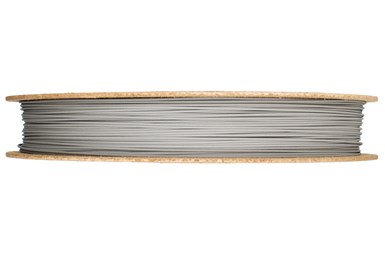Virtual Foundry’s M300 Tool Steel Filamet Offers Strength, Versatility for FFF 3D Printing
The Virtual Foundry developed its M300 Tool Steel Filamet material for fused filament fabrication, offering compatibility with a variety of 3D printers.
Share
Read Next
The Virtual Foundry’s M300 Tool Steel Filamet was developed as a fused filament fabrication (FFF) 3D printable tool steel to deliver unparalleled strength and versatility. The material is a maraging steel crafted from a premium blend of iron, nickel, cobalt, molybdenumand titanium.
Maraging steels are renowned for their exceptional strength and toughness while maintaining impressive ductility. The company says the low-carbon, high-strength characteristics of M300 make it a game changer in the world of 3D printing materials.
The M300 Tool Steel Filamet enables a seamless printing experience by offering compatibility with various 3D printers, including Creality, Bambu Lab, Ultimaker and more. The filament prints effortlessly, resembling the ease of working with PLA. It is said users who print with plastic will have no issues printing with M300 Tool Steel Filamet.
The print settings are made simple to easily unlocking the potential of maraging steel. Users can achieve optimal results with a 0.6-mm hardened steel nozzle, setting the nozzle temperature to 210°C and adjusting the flow rate to 135%. Ensuring the spool is positioned for a smooth extrusion journey guarantees a successful printing experience.
The Virtual Foundry is offering M300 Tool Steel Filamet in limited quantities for this exclusive launch. The filament is available in a 1.75 mm diameter, and customers can choose between quarter kilogram and half kilogram spools. The M300 Tool Steel Filamet is available for purchase from The Virtual Foundry shop and soon from its network of resellers.
The Virtual Foundry says it offers the only metal 3D printing technology that can be easily sintered in-house and doesn’t require cloud-based software. It offers metal additive manufacturing with complete flexibility and control. The Virtual Foundry’s key applications are in defense, academia and radiation shielding.The Virtual Foundry partners with research labs, universities, and a network of partner innovators around the globe to bring 3D printable high-tech materials to market.
Related Content
-
3D Printed Cutting Tool for Large Transmission Part: The Cool Parts Show Bonus
A boring tool that was once 30 kg challenged the performance of the machining center using it. The replacement tool is 11.5 kg, and more efficient as well, thanks to generative design.
-
AM 101: What Is Binder Jetting? (Includes Video)
Binder jetting requires no support structures, is accurate and repeatable, and is said to eliminate dimensional distortion problems common in some high-heat 3D technologies. Here is a look at how binder jetting works and its benefits for additive manufacturing.
-
Beehive Industries Is Going Big on Small-Scale Engines Made Through Additive Manufacturing
Backed by decades of experience in both aviation and additive, the company is now laser-focused on a single goal: developing, proving and scaling production of engines providing 5,000 lbs of thrust or less.















